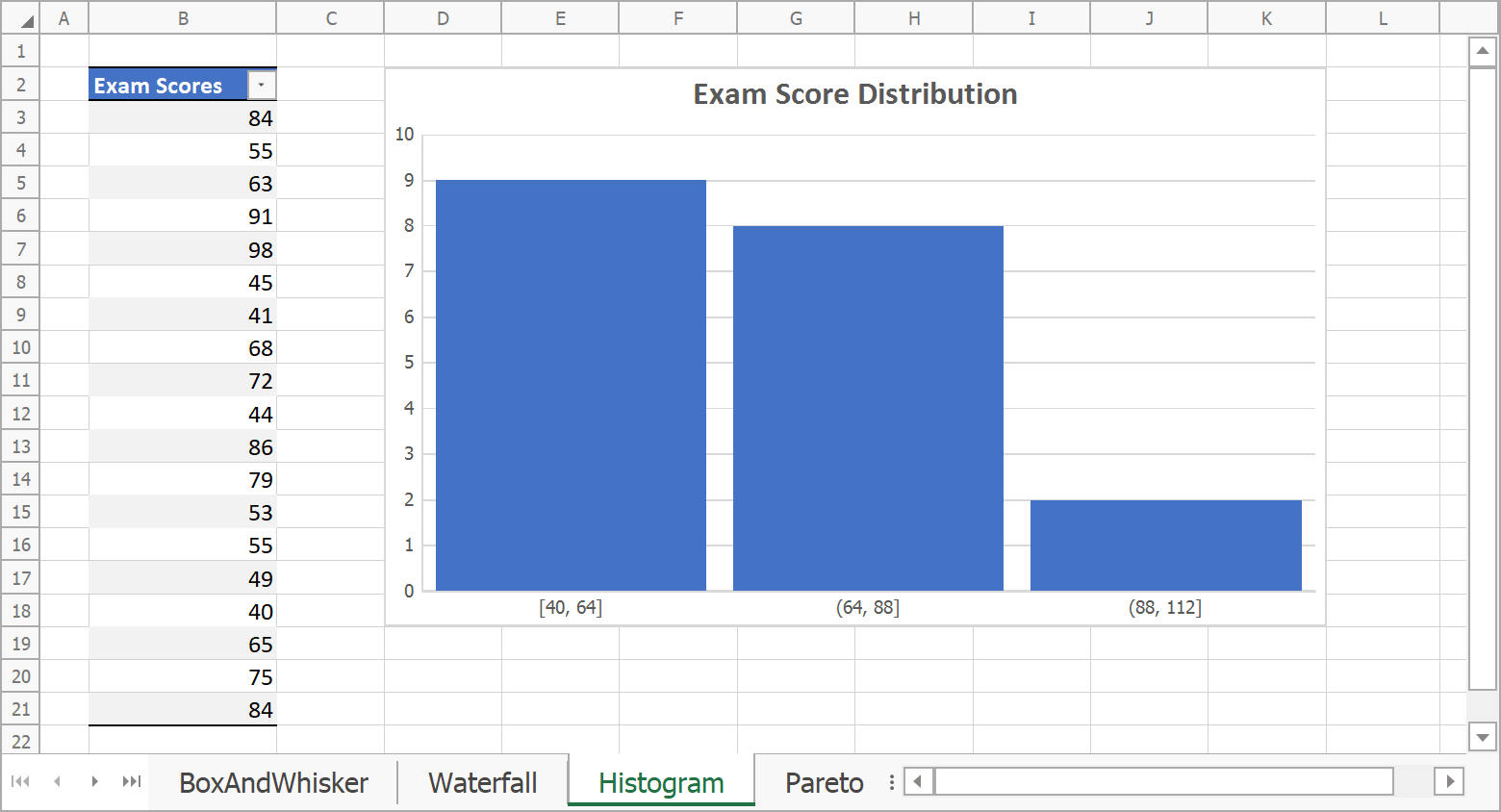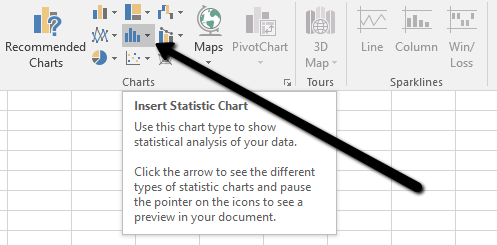

By category: Use this if you want to bin data by a category value.Number of bins: You can specify number of bins and let Excel decide the width.For our call center data, bin width of 15 or 30 seconds or even 60 seconds might be interesting. Bin width: If you know more about your data, you can set a custom bin width to analyze frequency by that.It bins your data by dividing it in to bins of width h, where h= (3.5 * sample standard deviation) / (n 1/3). Automatic: This is the default option.From here, you can choose how you want to bin your data. You can also right-click on axis and choose format axis options. To customize the bins, select the category / horizontal axis and press CTRL+1 to launch formatting options. That said, you can customize the most important thing – how Excel bins data. The histogram chart offers very few customization options (compared to other charts like column / scatter plot etc.). You will get histogram of call duration with default binning ( using Scott’s normal reference rule).Go to Insert > Statistic Chart > Histogram.Let’s say you have data like this and you want to understand call duration distribution. To create histogram in Excel, you need some data.
HOW TO DRAW A HISTOGRAM IN EXCEL 2016 HOW TO
Skip ahead to last section of this post if you want to know how to make Histograms in Excel 2013, 2010, 2007 or earlier versions. Using these you can quickly make a histogram and understand the frequency distribution and outliers.

But in Excel 2016, Microsoft introduced various new charts including Histograms and Pareto charts. This is where you take raw data and calculate the frequencies by bins. Prior to Excel 2016, making histograms involved an intermediate calculation step. Histograms are a great way to explore the underlying distribution of values. If you visualize the distribution of calls by duration like below, you will get a better picture. If you just average all call lengths, you might get some value like 90 seconds. You have the call log from last month and you want to know how long customers talk to your representatives. Let’s say you run a customer care center. Histogram chart shows distribution of data by grouping it in to bins (range of values). Sounds interesting? Let’s get started then.

If you choose pareto instead of histogram in the dialog box Insert Statistic Chart, you will get a rather similar graph (histogram-like) but where the columns are sorted in descending order from left to right. They do not necessarily match specific values from the dataset, but corresponds to the calculation that Excel makes to find the ranges. Note that the labels under the X-axis are the values which delimits the range of these 10 bars.
HOW TO DRAW A HISTOGRAM IN EXCEL 2016 FREE
Feel free to modify the look of your chart, to add titles, change colors and so on. Your chart now displays the distribution of your data according to the 10 ranges that you have defined. Using the menu to the right, indicate the number of bins/bars (for example 10) or the bin width, and press Enter. To do so, right-click on the X-axis and select Format Axis. All you have to do now is to decide how many columns you want in your chart, or what will be the size of the ranges or bins which define the columns. To draw a histogram, select your range of data, then go to the tab Insert, find the icon Insert Statistic Charts and choose Histogram.Ī chart appears and displays 5 bars (by default) representing frequency data. The histogram will eventually represent the distribution of the data and the shape of the chart will most certainly give you information on whether this distribution is symetrical, bimodal, skewed… Often, the simplest way to visualize your dataset or sample will be through a histogram, also called frequency histogram. In Excel16 -2- Descriptive statistics / MS Excel 2016 (EN)


 0 kommentar(er)
0 kommentar(er)
